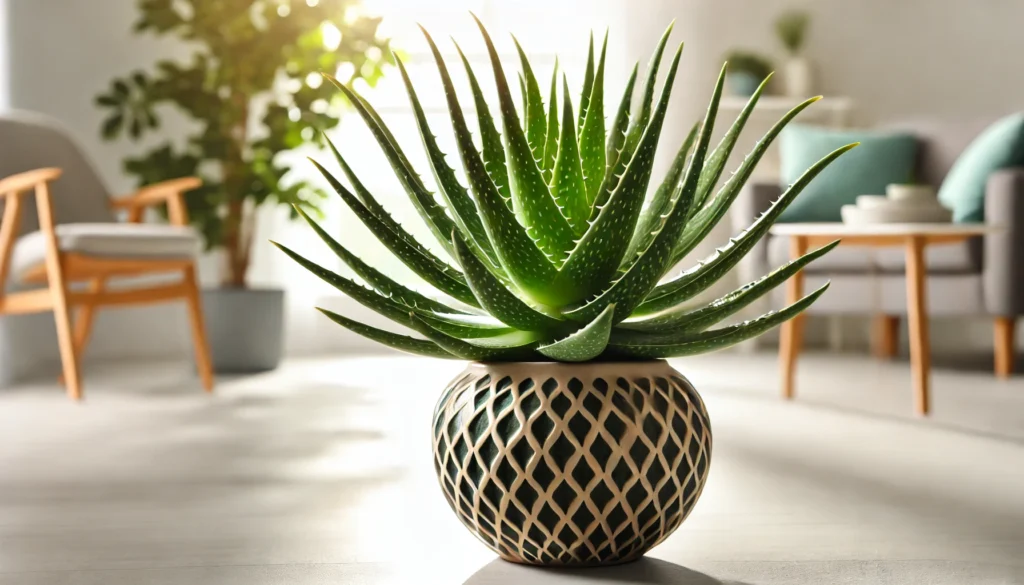
The Cast Iron Plant, known scientifically as Aspidistra elatior, is renowned for its hardy nature and lush, green foliage. True to its name, this plant is incredibly resilient, making it an ideal choice for those who want a beautiful yet low-maintenance addition to their indoor or outdoor garden. Cast Iron Plants typically grow to about 2-3 feet tall and wide, making them a manageable size for any space.
A Rich History and Ideal Growing Conditions
Native to the forest floors of Japan and Taiwan, the Cast Iron Plant has been a popular houseplant since the Victorian era. It was favored for its ability to thrive in low light and withstand neglect. This plant grows best in shaded or partially shaded areas, both indoors and outdoors, and it can tolerate a wide range of temperatures and conditions.
Cast Iron Plant and Pets: Important Information
One of the best things about the Cast Iron Plant is that it is non-toxic to pets. You can enjoy its lush greenery without worrying about the safety of your cats or dogs, making it a great choice for pet owners.
Best Practices for Caring for Your Cast Iron Plant
Caring for a Cast Iron Plant is straightforward, making it perfect for both novice and experienced plant enthusiasts.
Watering and Humidity
Cast Iron Plants prefer to be kept on the dry side. Water them thoroughly when the top inch of soil feels dry, and ensure that excess water drains out of the pot to prevent root rot. In general, watering every 1-2 weeks is sufficient, but you may need to adjust based on your specific environment. These plants are quite tolerant of average household humidity levels and do not require additional humidity.
Soil, Light, and Temperature
A well-draining potting mix is essential for Cast Iron Plants. They grow best in low to moderate light conditions and can tolerate deep shade, making them perfect for rooms with little natural light. Avoid direct sunlight, which can scorch the leaves. Cast Iron Plants prefer temperatures between 50°F and 85°F. They are relatively hardy and can withstand fluctuations in temperature, but they should be protected from extreme cold.
Common Problems and Remedies
Even with the best care, Cast Iron Plants can encounter some common issues. Yellowing leaves can be a sign of overwatering or poor drainage. To remedy this, ensure the soil is well-draining and adjust your watering schedule accordingly. Brown leaf tips can be caused by dry air or inconsistent watering. Maintaining a regular watering schedule can help prevent this issue.
Cast Iron Plants are generally pest-resistant but can occasionally be affected by pests such as spider mites and scale. To combat these pests, use a water and mild soap solution or neem oil spray. Regularly inspecting your plant and wiping down the leaves can help prevent pest infestations.
Propagation and Benefits
Propagating Cast Iron Plants is relatively easy and can be done through division. When repotting, gently separate the plant into smaller sections, each with its roots, and plant them in individual pots. This method is not only easy but also a great way to expand your collection or share plants with friends.
Cast Iron Plants are not only beautiful but also beneficial to your indoor environment. They are known for their air-purifying qualities, helping to remove toxins such as formaldehyde and benzene from the air.
Final Thoughts
Cast Iron Plants are one of the most resilient and easy-to-care-for houseplants you can add to your home. Their lush, green foliage and adaptability make them a favorite among plant enthusiasts and interior designers alike. While they do require some attention to thrive, the rewards are well worth the effort. With the right care, your Cast Iron Plant can become a stunning focal point in your home. So why not add a Cast Iron Plant to your collection and enjoy the beauty and benefits it brings?



